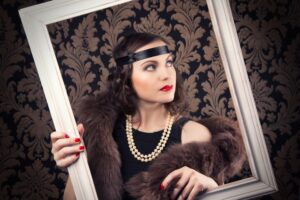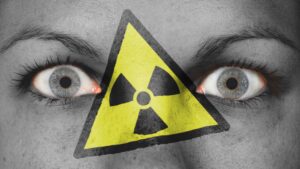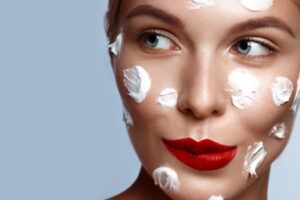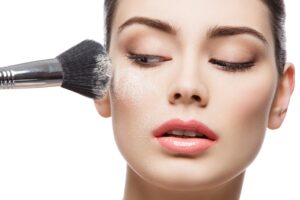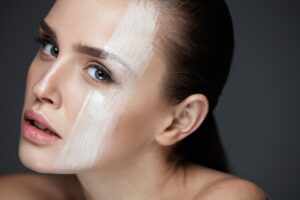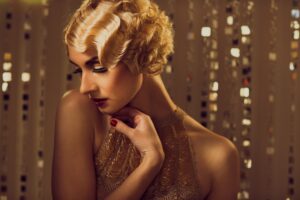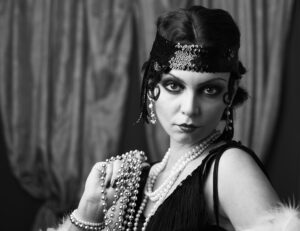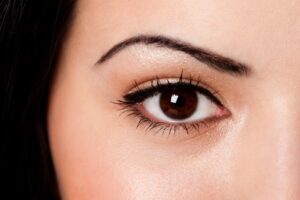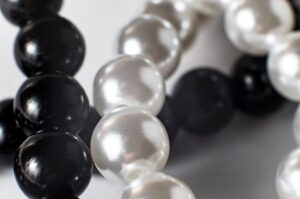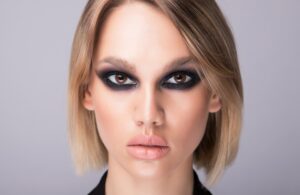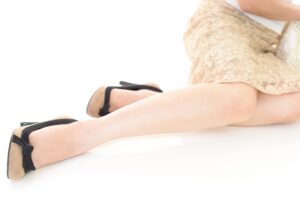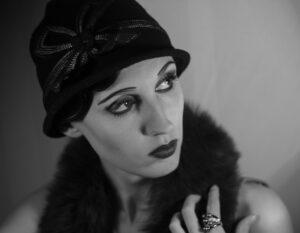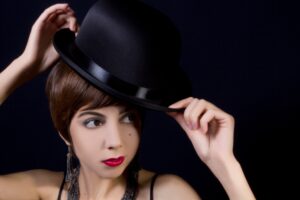The Roaring Twenties, an era marked by dramatic social and economic change, also saw an evolution in beauty standards that would seem almost alien today. While contemporary beauty trends lean towards natural and sustainable practices, the 1920s embraced a flair for the dramatic and the novel, often with bizarre twists. From the use of radium in cosmetics to the bobbed hair revolution, these beauty standards and practices from the ’20s would undoubtedly stun modern audiences. Let’s explore 12 of these intriguing trends.
1. Radium Beauty Products
In the 1920s, the discovery of radium and its mysterious glow led to a bizarre beauty trend. Radium was infused in various beauty products, including creams and powders, believed to impart a radiant complexion. However, the glowing allure came at a high price, as radium is highly radioactive. Unknowingly, women were exposing themselves to dangerous levels of radiation, leading to severe health complications later on.
2. Lard-Based Creams and Hair Products
In the 1920s, a rather unusual component found in many beauty products was lard. Used in various creams and hair products, lard was praised for its ability to moisturize and enhance hair shine. This trend reflects a time when animal products were commonly incorporated into beauty routines without the same ethical or health concerns expressed today. While modern beauty standards favor plant-based or synthetic alternatives for ethical and health reasons, lard-based products were once a staple in beauty cabinets, embodying the era’s less scrutinized approach to ingredients in personal care products.
3. Lead-Based Face Powder
While the use of lead in cosmetics dates back to ancient times, it persisted into the 1920s. Lead-based face powders were popular for their ability to provide a pale and matte finish, which was a coveted look of that era. Unfortunately, lead is a potent neurotoxin, and prolonged use causes a variety of health issues, including skin damage, hair loss, and even more severe organ toxicity.
4. Mercury for Skin Whitening
During the 1920s, the use of mercury-laden creams for skin whitening was a common but dangerous practice. These creams promised to lighten the complexion and clear the skin of blemishes and freckles, which aligned with the beauty standards of that era for pale, unblemished skin. However, mercury is highly toxic and can cause severe skin damage, scarring, and serious health issues, including neurological damage. The use of such hazardous substances highlights the lengths to which people would go to conform to beauty ideals, often at significant risk to their health.
5. The Tapeworm Diet
Although not exclusively a beauty practice, the tapeworm diet was utilized by some looking to maintain the slim figure ideal of the 1920s. Individuals would ingest tapeworm eggs, hoping the parasites would help them lose weight without additional dieting or exercise. This hazardous method was as dangerous as it sounds, causing severe health issues ranging from malnutrition to death.
6. Bobbed Hair
A more benign yet revolutionary beauty trend of the 1920s was the bob haircut. Moving away from the long, voluminous styles of previous decades, the bob was a bold statement of modernity and liberation for women. This dramatic shift in hair fashion reflected broader social changes, including women’s increasing independence and the rejection of traditional gender norms.
7. The Cupid’s Bow Lip
The 1920s makeup aesthetic included a very distinctive lip shape known as the Cupid’s Bow. Women would use lip liner to overdraw the upper lip to create a pronounced double-curve, which was thought to be highly desirable. This look was often paired with dark red or even black lipstick, which made the lips a striking focal point of a woman’s face.
8. Eyebrow Plucking for Thin Lines
Another unique aspect of 1920s beauty was the trend towards extremely thin, penciled eyebrows. Women plucked their natural brows to almost non-existence, then redrew them with a pencil in a fine, curved line. This look is in stark contrast to the fuller, more natural brows favored today and would be considered excessive by current beauty standards.
9. Beaded Eyelashes
In the 1920s, beaded eyelashes became a novel trend for those seeking to add a glamorous and dramatic touch to their evening makeup. These lashes were embellished with tiny beads or sequins, catching the light and emphasizing the eyes during the lively jazz nights and lavish parties of the era. This extravagant style, though less practical for everyday wear, showcased the decade’s love for opulence and innovation in beauty.
10. Kohl-Rimmed Eyes
In the 1920s, kohl-rimmed eyes were a defining beauty trend, embraced by women seeking to emulate the dramatic and exotic look popularized by movie stars of the silent film era. Applied heavily around the eyelids, kohl was used to create a dark, smoldering effect that enhanced the eyes’ expressiveness, which was especially important in the era of black-and-white cinema. This bold use of kohl played a crucial role in the evolution of makeup artistry, influencing the way eyes were highlighted in fashion and film.
11. X-Rays for Unwanted Hair Removal
In the 1920s, X-ray technology was not only used for medical diagnostics but also adopted for removing unwanted hair. This method was seen as a cutting-edge solution for achieving smoother skin without the need for repetitive shaving or painful waxing. However, the high exposure to radiation posed serious health risks, leading to severe skin damage and increased risk of cancer, ultimately causing this practice to be abandoned.
12. Chest Binding
During the 1920s, the fashion trend towards a flatter, more androgynous silhouette led many women to practice chest binding. This involved tightly wrapping the upper torso to conform to the era’s beauty standards that favored boyish figures for women. While this practice allowed women to wear the stylish flapper dresses of the time more effectively, it often resulted in discomfort and potential health risks due to restricted breathing and circulation.
These Unusual Beauty Standards and Practices from the ’20s Show How Far We’ve Come
These unusual and often hazardous beauty standards from the 1920s show how far society has come in understanding health and safety in beauty practices. While today’s beauty trends continue to evolve, health and ethical considerations now guide the industry, steering it away from the harmful practices of the past. This historical perspective not only enlightens but also appreciates the progress made in ensuring that beauty standards do not compromise health and well-being.
Read More:
10 Eye-Opening Comparisons Between Life in the 1980s and Today
15 Bizarre Supermarket Products from the ’70s That Are No Longer Seen Today
Catherine is a tech-savvy writer who has focused on the personal finance space for more than eight years. She has a Bachelor’s in Information Technology and enjoys showcasing how tech can simplify everyday personal finance tasks like budgeting, spending tracking, and planning for the future. Additionally, she’s explored the ins and outs of the world of side hustles and loves to share what she’s learned along the way. When she’s not working, you can find her relaxing at home in the Pacific Northwest with her two cats or enjoying a cup of coffee at her neighborhood cafe.

